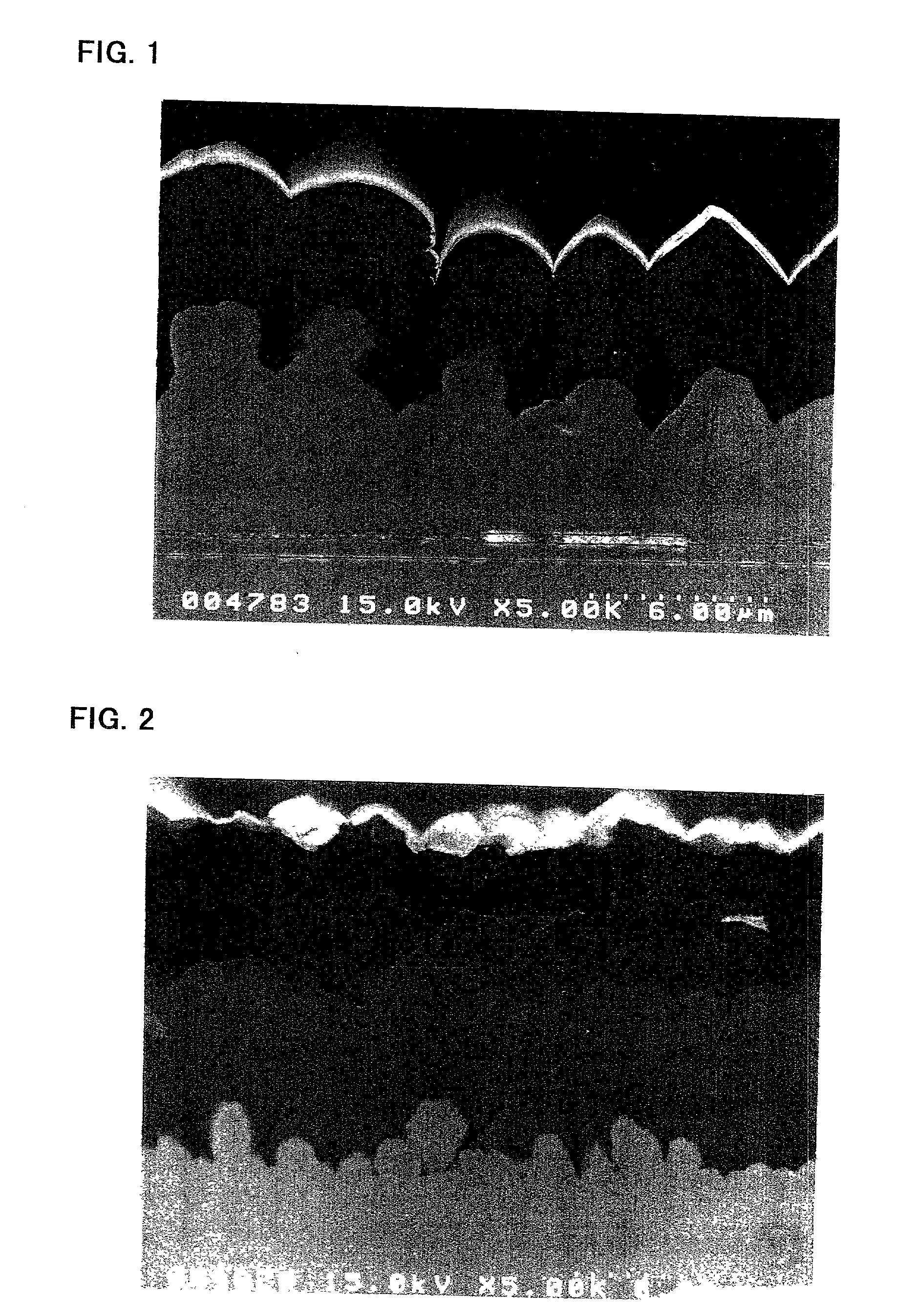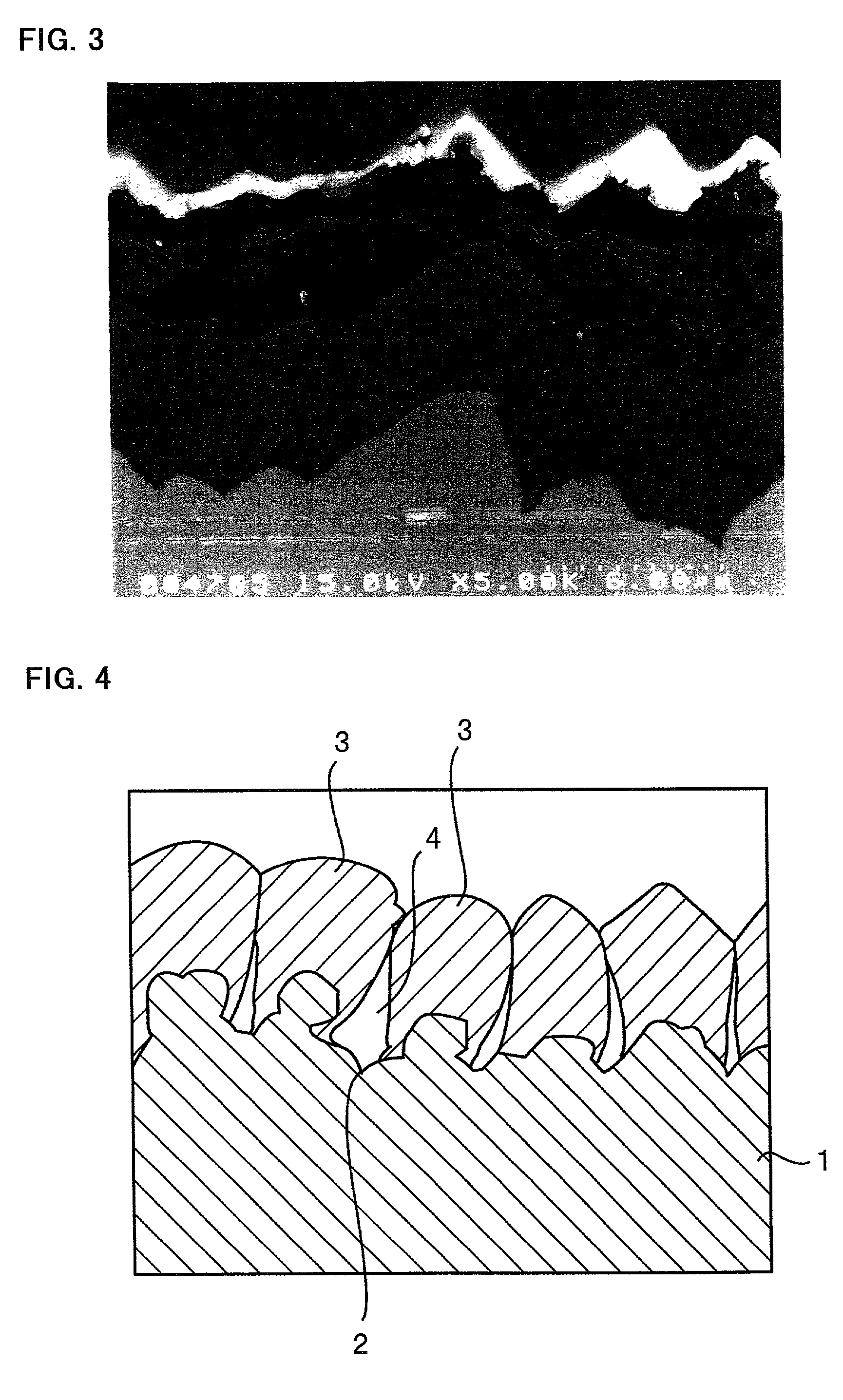Electrode for rechargeable lithium battery and rechargeable lithium battery
a rechargeable lithium battery and electrode technology, applied in the direction of non-aqueous electrolyte accumulator electrodes, cell components, basic electric elements, etc., can solve the problems of internal short circuit, deformation, and negative electrodes composed of these types of alloys that have failed to provide sufficient cycle characteristics
- Summary
- Abstract
- Description
- Claims
- Application Information
AI Technical Summary
Benefits of technology
Problems solved by technology
Method used
Image
Examples
experiment 1
[0047] Experiment 1
[0048] (Preparation of Current Collector Substrates)
[0049] Three different types of substrates a, b and c were prepared.
[0050] The substrate a was prepared by depositing copper particles on an electrolytic copper foil (surface roughness Ra=0.72 .mu.m) by an electrolytic deposition process. The electrolytic copper foil was fabricated by an electrolytic process. Electrolytic deposition of the copper particles was achieved by using the electrolytic copper foil as a cathode and effecting electrolysis at a current density of 3 A / dm.sup.2 in a copper sulfate plating bath.
[0051] The substrate b was prepared by depositing copper particles on a rolled copper foil (surface roughness Ra=0.07 .mu.m) by an electrolytic deposition process, as similar to the case of the substrate a.
[0052] The substrate c was an electrolytic copper foil having the same surface profile and surface roughness as that used in the preparation of the substrate a.
[0053] The surface roughness Ra, surface...
experiment 2
[0088] Experiment 2
[0089] A Corson alloy foil was chemically etched at its surface to prepare a substrate having a rough surface. The thickness, tensile strength, proportional limit, elastic coefficient and surface roughness Ra of this substrate are listed in Table 4. The thickness is given by a value measured by a micrometer. The tensile strength, proportional limit and elastic coefficient are given by values determined using an Instron 5566 universal testing machine from Instron Corporation. The surface roughness Ra is given by a value measured by a surface roughness meter.
4TABLE 4 Thick- Tensile Proportional Elastic Surface Sub- ness Strength Limit Coefficient Roughness strate (.mu.m) (N / mm.sup.2) (N / mm.sup.2) (.times.10.sup.5 N / mm.sup.2) Ra (.mu.m) Corson 19.5 630 195 1.4 0.20 Alloy
[0090] The procedure of Experiment 1 was followed to deposit copper particles on this substrate, instead of the substrate a, by an electrolytic deposition process. After deposition of the copper parti...
PUM
| Property | Measurement | Unit |
|---|---|---|
| surface roughness Ra | aaaaa | aaaaa |
| tensile strength | aaaaa | aaaaa |
| tensile strength | aaaaa | aaaaa |
Abstract
Description
Claims
Application Information
 Login to View More
Login to View More - R&D
- Intellectual Property
- Life Sciences
- Materials
- Tech Scout
- Unparalleled Data Quality
- Higher Quality Content
- 60% Fewer Hallucinations
Browse by: Latest US Patents, China's latest patents, Technical Efficacy Thesaurus, Application Domain, Technology Topic, Popular Technical Reports.
© 2025 PatSnap. All rights reserved.Legal|Privacy policy|Modern Slavery Act Transparency Statement|Sitemap|About US| Contact US: help@patsnap.com



